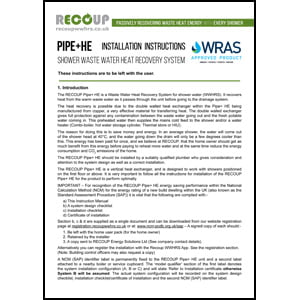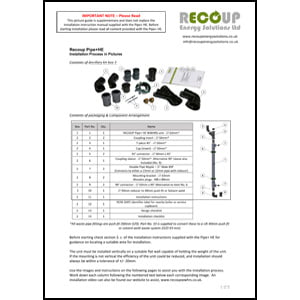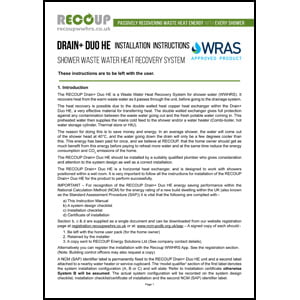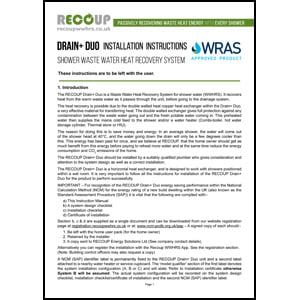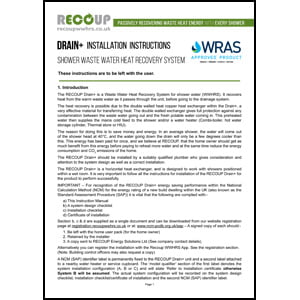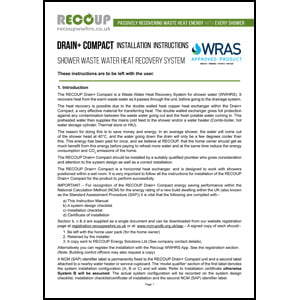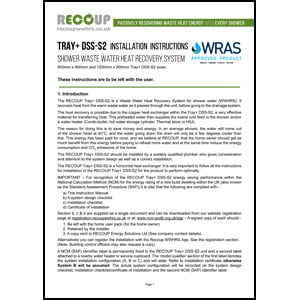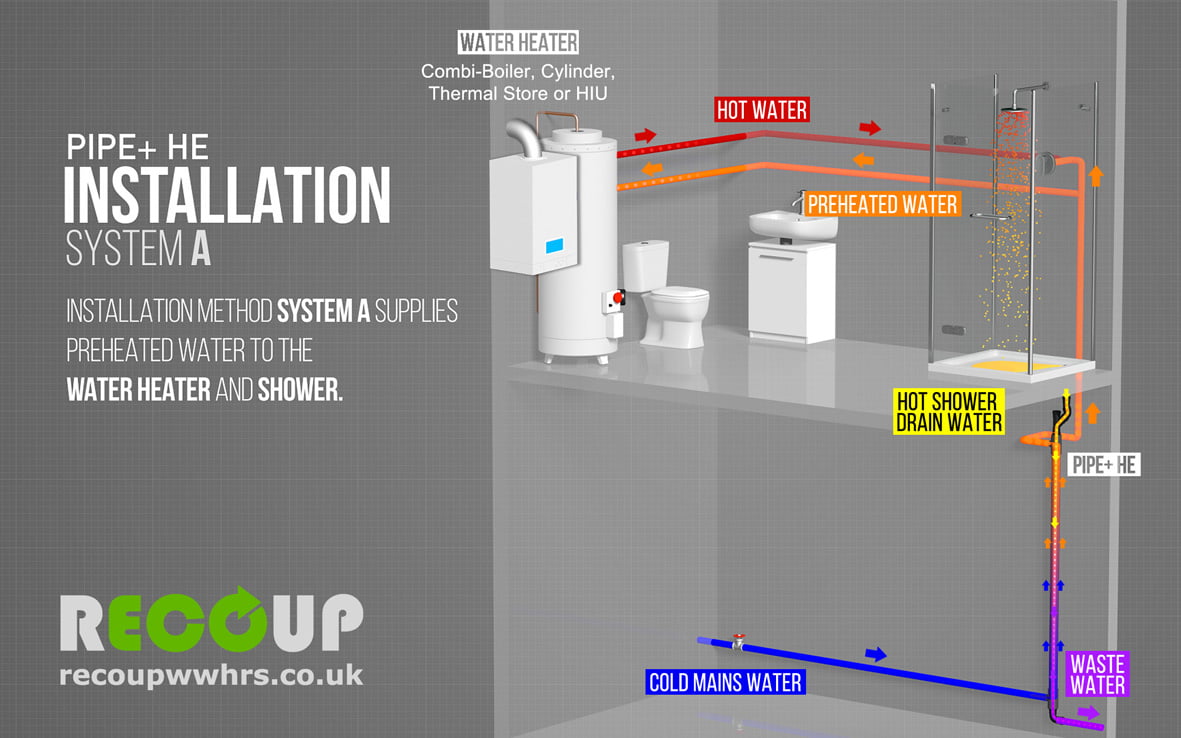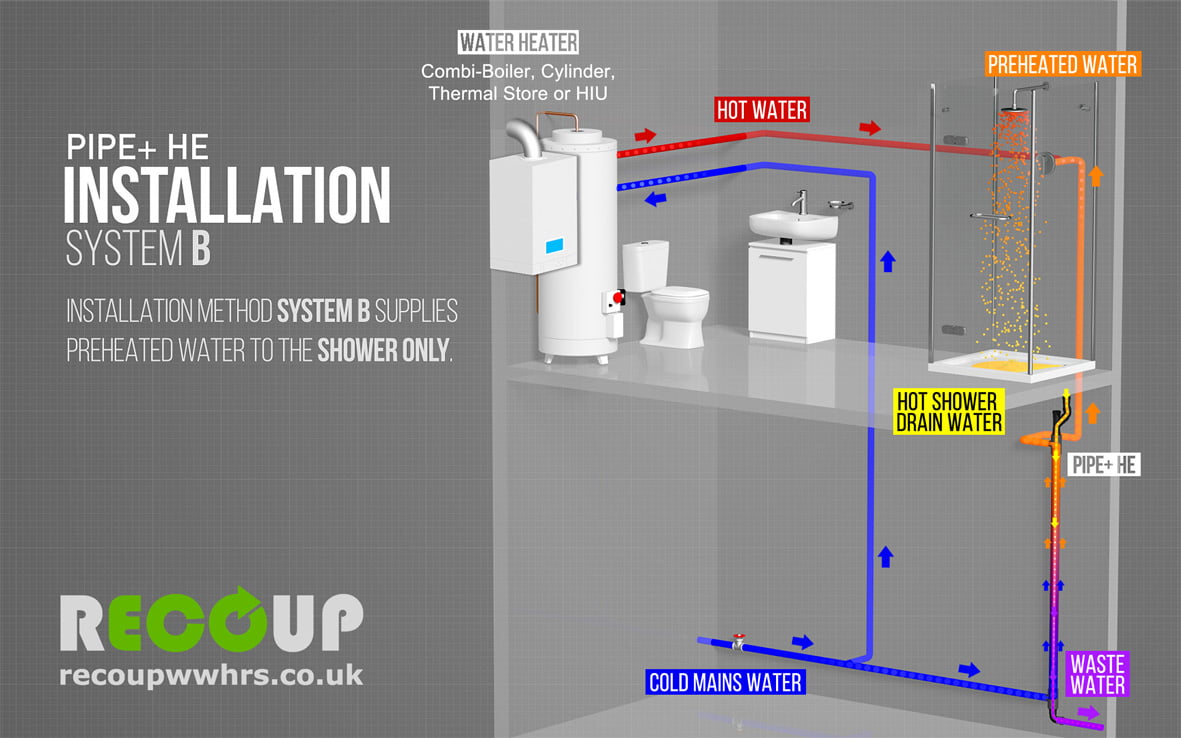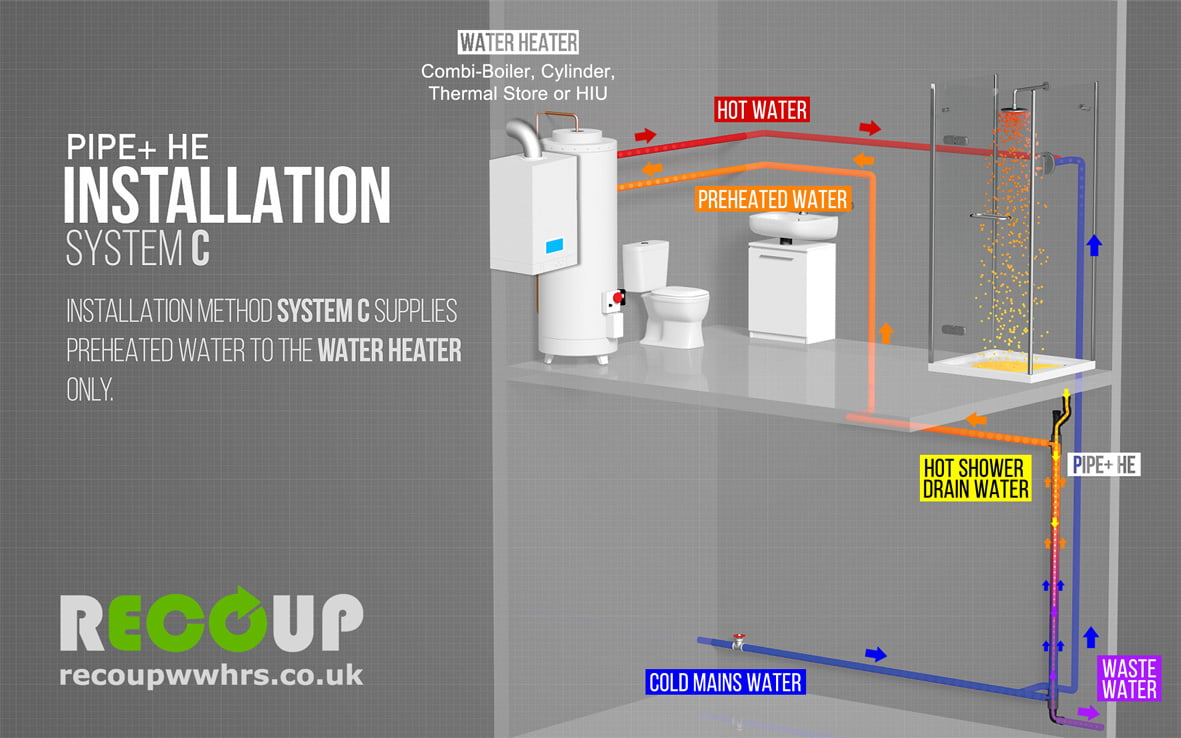Waste Water Heat Recovery for Showers
“Heat recovery from wastewater” is recognised as a renewable energy technology following EU directive
Heat recovery from wastewater is now recognized by Europe as a renewable energy. In its rewriting of the renewable energy directive (RED II) in December 2018, the European Commission considers the ‘ambient heat’ locked up in greywater sources, such as shower waste water, a source of ‘ambient energy’. This puts it in line with more recognised renewable energy sources, such as solar and wind energy, as a source of renewable energy.
The European Commission has introduced heat recovery from wastewater in its recasting of the Directive on the promotion of the use of energy from renewable sources (RED II) as “ambient energy”.
In Directive 2018/2001, Article 2 (2), “ambient energy” means the naturally occurring thermal energy and energy accumulated in a closed environment, which may be stored in the ambient air, excluding exhaust air, in surface water or in wastewater. “
This inclusion of WWHRS technology is expected to have significant future consequences for national building codes and overarching energy efficiency policies, as EU countries are committed to ensuring most of the energy used in houses and apartments to be built is renewable energy. It is assumed that the UK will map this policy across in the event of Brexit.
Up until now, ‘renewable technologies’ accepted by local authorities for local planning uplifts, have mainly included photovoltaics, thermal solar heating or heat pumps. Now waste water heat recovery can be added to this suite of renewable technologies as a very cost-effective solution to any increased Part-L compliance targets issue by Local Planning Authorities, and potentially even future renewable energy targets, grants and funding.


